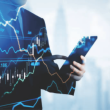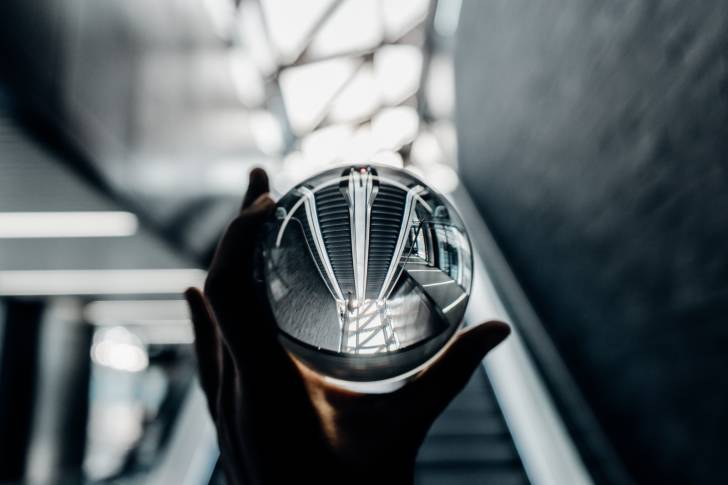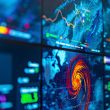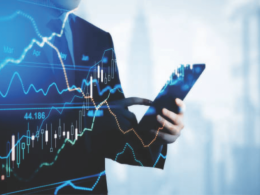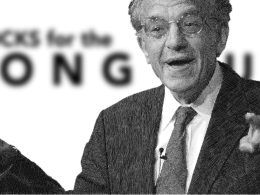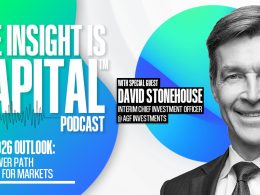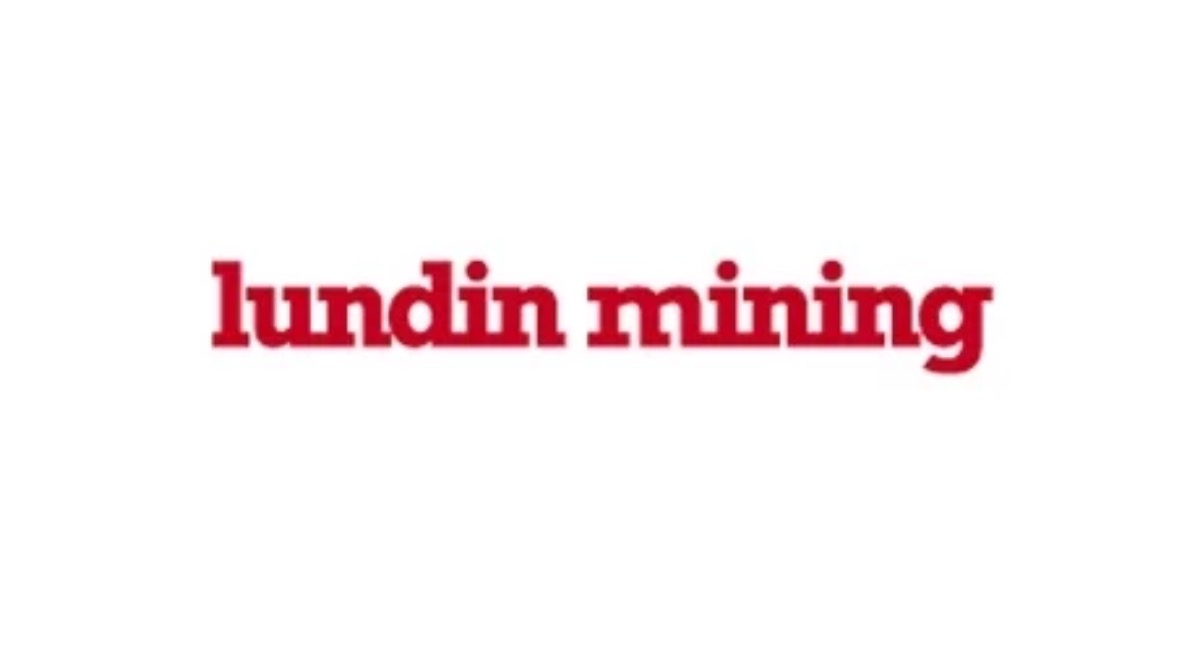Let’s be honest—predicting where investing is headed ten years from now feels a bit like guessing what the weather will be in 2035. Still, that didn’t stop TD Asset Management from diving headfirst into the challenge1. They brought together four of their top thinkers—TD Asset Management’s Head of Asset Allocation and Derivatives, Michael Craig, Portfolio Manager and Managing Director, Vitali Mossounov, Head of Commodities Hussein Allidina, and Epoch Investment Partners’ Kevin Hebner,—to tackle two big, future-facing questions:
- What’s a major disruptor that could shake up investing over the next decade?
- What’s your boldest, wildest prediction for what investing might look like by 2035?
What followed was part forecast, part crystal-ball gazing—and surprisingly, a pretty clear map of what’s coming: a world remade by AI, geopolitical rewiring, and massive shifts in where and how we invest.
BIG: What Could Disrupt Investing in the Next 10 Years?
Michael Craig: Capital Flows Will Go Local
Michael Craig sees a world where countries stop relying so heavily on global trade and start looking inward. That means more local infrastructure, more clean energy, and more focus on domestic consumers. It also means capital will follow.
“Countries like Canada, Germany, France and Japan… could become major beneficiaries of capital flows,” he says.
And that shift could create entirely new investment opportunities—think ETFs and funds built around self-reliance themes, like onshoring, energy transition, and regional infrastructure.
“The ‘rest of the world’ investing inward could rebalance global capital flows, decentralize growth narratives, and create new alpha-generating opportunities.”
Kevin Hebner: AI Will Drown Us in Fake Content
Kevin Hebner’s concern is sharper—and more personal. As AI spreads across every corner of life, so will misinformation.
“Over 90% of content… will soon be AI-generated,” he warns. “We are all going to be overwhelmed by such dishonesty and deception.”
He believes a whole new industry will emerge to fight back—think real-time content verification tools, like spam filters but for misinformation. And, just as importantly, he sees a premium being placed on trust.
“Influencers, media professionals, and companies that can prove their content is accurate… will earn trust and gain an enormous edge.”
Vitali Mossounov: Capital Will Win, Labour Will Lose
Vitali Mossounov challenges the old rule that technology always creates more jobs than it kills. With AI, that might not hold true.
“The advantages over the next decades lie with capital and not labour, which will become increasingly commoditized.”
His argument? In the past, complexity and consumer demand created new industries and jobs. But today, AI is making things less complex, and consumption may have peaked.
“This will be a slow-moving train… but the implications for society, government, and corporate earnings are vast.”
Hussein Allidina: Energy Will Be the AI Era’s Bottleneck
For Hussein Allidina, AI’s meteoric rise comes with a hidden cost—energy.
“Data centers powering AI models require vast amounts of electricity… contributing to higher and more volatile energy prices.”
That pressure on power grids is already creating ripple effects. But it’s also spurring a surge in investment in backup power and storage solutions.
“The more AI scales, the more critical stable, flexible, and resilient energy systems become… positioning storage technologies and energy infrastructure as essential growth sectors.”
BOLD: What Might the Investing World Look Like in 2035?
Michael Craig: Say Hello to a New Global Currency
Craig thinks the U.S. dollar may lose its grip as the world’s reserve currency—and it might get replaced by something digital and collaborative.
“A basket-backed digital currency, like a Special Drawing Rights (SDR) but digitized, could offer a more stable and politically neutral alternative to the U.S. Dollar.”
If trust in U.S. leadership wanes, a supranational digital trade currency—backed by a blend of euros, yuan, yen, rupees, and some dollars—might fill the void.
“If the U.S. Dollar weakens—either by policy or perception—it could be the architecture that defines the next era of globalization.”
Kevin Hebner: AI Will Cure Cancer—and Change Capital Markets
Hebner goes big: by 2035, AI might help us “vaccinate” against most cancers.
“AI leads to ‘vaccines’ for most cancers by 2035.”
The investing ripple effects? Massive. Traditional cancer-treatment stocks might crater. Biotech, gene-editing, and personalized medicine firms could soar.
“If the average lifespan increased by, say, ten years… it could have a revolutionary impact on how we think about education, our careers, and retirement planning.”
Vitali Mossounov: You’ll Star in Your Own TV Show
Mossounov’s bold vision? AI will turn entertainment into a personal playground.
“AI won’t just change what we watch – it will reshape how content is made, customized, and consumed.”
Don’t like the end of Succession? Prefer a world where Walter White wins? AI can rewrite the story just for you.
“Didn’t like the end of Succession? Prefer Walter White wins? AI can rewrite the story—just for you.”
And with VR and AR advancing fast, you won’t just be watching—you’ll be in the story.
Hussein Allidina: Stagflation, Volatility, and a Whole New Playbook
Allidina’s view is sobering. If inflation stays high and growth stays weak—a classic stagflation scenario—the global economy could enter a long, volatile slog.
“If the next decade is defined by global stagflation… the global economy could become fragmented, volatile, and risk-averse.”
That means real assets like gold, commodities, and infrastructure could take center stage. And agile, active investing will be more important than ever.
“Volatility becomes structural… rewarding nimble strategies like active management and alternatives.”
What Advisors Should Watch For
The next ten years won’t be about repeating what worked in the past. The investing terrain is shifting—and advisors will need to help clients adjust.
- Focus on Real Assets and Alternatives - In a world shaped by energy constraints and inflation, assets with real-world utility—like commodities, infrastructure, and non-traditional sectors—may prove resilient.
- Build Trust Through Transparency - As AI-generated noise increases, clients will lean more on advisors and firms they trust. Authenticity and clarity will become differentiators.
- Prepare for a Shift in Global Currencies - A weakening dollar could change how portfolios are built. Keep an eye on emerging currency systems and regional economic blocs.
- Rethink Longevity Planning - If biotech takes a leap forward, clients may need to fund retirements that last decades longer. This could reshape everything from insurance needs to withdrawal strategies.
- Stay Nimble and Global - Structural volatility and fragmentation mean the days of set-it-and-forget-it investing may be numbered. Active strategies and geographic diversification could be critical.
Sure, they joked about flying cars and stock markets on Mars—but this group wasn’t playing around. As Kevin Hebner put it:
“The second-order effects… could rival that of antibiotics and vaccines for infectious diseases—ushering in a new era of health, longevity, and hope.”
The future of investing might not look like anything we’ve seen before—but that doesn’t mean we can’t prepare for it.
Footnote:
1 TD Asset Management. "Crystal Balls and Spreadsheets." 26 June 2025.

